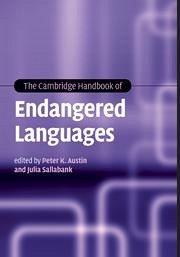Nicht lieferbar

The Cambridge Handbook of Endangered Languages
This Handbook examines the reasons behind the loss of linguistic diversity and what can be done to document and support endangered languages.

Rechnungen
Bestellstatus
Retourenschein
Storno